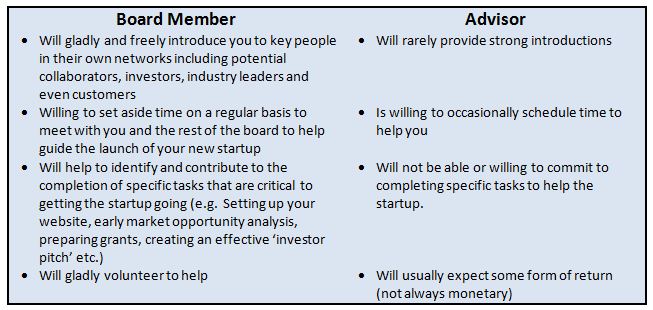
Selecting a ‘big fish’ CEO from a large company or an experienced one from the startup community. Matching the style of leadership with your needs is more important than where they have come from .
By: Michael Kaiser
A startup company, in any business undertaking, is usually the creation of an entrepreneur or inventor, who is either unwilling to continue working for, or dissatisfied with the operational restrictions of established corporations. The move to create a startup company may also be the result of a corporation’s meltdown or downsizing, hence the opportunity “to do what I always wanted, my own business”. For those who left an established corporation, the transition may be as difficult as those who created a startup which then becomes the target of a corporate takeover that affects their hitherto control and independence. In both cases, four elements reign supreme: money, investment, innovation, leadership.
In general, early startups are more susceptible to failure than advanced or established corporations, either due to lack of funding or a specific organizational experience requirement. Obviously that is one area where a former corporation high-executive will have a better chance of success. But the entrepreneur, no matter if by previous corporate title or by sheer personal initiative also wields advantages such as initiative, the product or service it creates, and the independence to move forward without the rigid interference of executive echelons.
The Risk Takers
Entrepreneurial executives are usually recognized as “risk takers” but that is not to be taken as their defining attribute because, not surprisingly, they avoid unnecessary risks that may impact their agenda for success. In the current global economy, those entrepreneurs that will jump in the pool without checking if there is enough water to avoid injury will find the hard way that they are not ready to swim.
That is not to say that risk is an entry/exit barrier; rather it is the concept that the risk taken fills a need. Recent examples in business history are Steve Jobs and Microsoft’s Bill Gates. It was their determination (Jobs worked until the last two or one day before his death), vision and leadership that brought about the global impact of their innovations. (The 10 greatest entrepreneurs – Investopedia).
Organic Growth
The entrepreneur’s personality does not suffer fools, but also requires that he/she should select and be surrounded by capable partners that will support the vision of their leader but also be able to challenge it when necessary. One reason for that is that a startup’s solution to generate income and grow their products or services as soon as possible requires an “organic growth” strategy.
The Established Corporation (EC)
In contrast to a startup, an established corporation (herein EC) has the resources, organizational plans and established business recognition that allows it to expand globally as well as the domestic market. Procter and Gamble, General Electric, Pfizer, Novartis, and Toyota are just a few examples that come to mind. The EC is usually, if not always, listed on a financial exchange such as the New York and London Exchanges, the Asian ones and the NASDAQ. That apparent advantage over the startups came crashing down in 2008 with the economy’s “Great Recession”, which to the present day has not fully recovered.
The Crisis
The economic crisis forced many EC’s to cut the number of employees or facilities, and seek mergers with other EC’s. More surprisingly, even dramatically so, many large corporations had to reverse their established organizational standards to operational policies somewhere between their previous ways and the more dynamic and fast moving startup; imagine the difference between an EC as a tractor trailer and the startup as a sports car. In many cases, top executives that held their jobs for many years were summarily removed or forced to resign.
One particular reason why those EC’s that were able to survive the 2008 economic crisis had to change their entrenched policies as soon as possible was their investment presence in the global marketplace. Even those EC’s long established in the major exchanges mentioned above had to face not only the headquarter loss but those of their subsidiaries in Europe, Asia and Latin America as well.
Experience
The CEO’s of established corporations do not differ too much from that of their startup counterparts, but at the same time their experience with entrenched organizational policies and negotiating skills with clients or competitors, as well as the need to report corporate directions to the board of directors, with the support of teams reporting to them, represent a clear advantage in facilitating the conduct of the their business. In contrast to startups, the EC’s can operate and expand their business growth by adopting either an organic or inorganic growth strategy.
There is one specific and important requirement shared by both startups and established corporations in their quest for success: Leadership.
The Twain Can Meet
The old saying that “never the twain shall meet” meant that two things or people are very different and cannot exist together. The British novelist Rudyard Kipling chose a more geographic description: “Oh, East is East and West is West, and never the twain shall meet”.
Well, that is not always the case in the business world, because there is one exception that allows an easier executive transition and it is the established corporation’s CEO moving to a startup. Although entrepreneurial executives like Steve Jobs, Bill Gates or Larry Page and Sergey Brin (Google) were able to wear the corporate mantle as their companies grew to a global level, those are exceptions more than the norm.
The Entrepreneurial CEO
A highly energetic and innovative startup CEO feels the need to wear multiple hats in order to implement his/her vision without interruptions or critique from employees or company directors. Those executives like to put their seal on the company as soon as possible, without interference and distractions. That is particularly evident in software/hardware, life sciences and engineering nascent companies. But once their companies have grown to the level of a large corporation, or are acquired by one, they require financial expertise, resources and organizational rules that are just some of the advantages expected and available in a large, successful corporation. And that is when many entrepreneurs, accustomed to ‘my way or no way’ leave or are eased out their startup after a reasonable time, or are induced to accept executive roles such as Chief Scientific Officer, VP Engineering Division, etc.
The Corporate CEO
By contrast with the above, a corporate CEO executive is often called in by investors/venture capitalists to save a startup that finds itself in rough waters, because its CEO is unable to navigate the storm or his/her ego is such that he/she cannot accept help from experts; the startup in question has a very marketable product or service, but the leader is floundering. Thus, a new, very experienced corporate CEO is called in to take control, even if it is not Jack Welch or A.G. Lafley.
The Lafley case is particularly interesting: as the former Chairman and CEO of Procter and Gamble, he was called in by investors and the Board of Directors to retake the leadership of P&G, a household name that found itself facing losses under the executive that followed Lafley once he left P&G after his successful tenure. The reason for recalling Lafley was obvious: leadership and vast managerial experience with a large global corporation; he accepted the “May Day” call from his former employer (What A.G. Lafley’s Return Means for P&G – Harvard Business Review). The point being made here is that an experienced and recognized corporation executive can, although not always, save a promising startup company from sinking in a storm and lead it to success. There is little chance that a creative, dynamic, innovative startup leader would be called to save a large, global corporation. Yes, the twain can meet, but more often than not, only in one direction.
Epilogue
The subject of this article covers just a few of the multiple scenarios that deal with different examples, outcomes and opinions, as mentioned at the beginning of this article. To afford the reader further information I enclose a list of helpful sources (see below) divided in three sections: 1) Entrepreneurs; 2) Organic and Inorganic Growth; 3) Management.
Recommended Information
1) Entrepreneurs
2) Organic and Inorganic Growth
3) Management
- Our History In Depth – Google How a startup became a global power.
- Google – Wikipedia The startup that became a mega-corporation.
- Jack Welch Quotes – Brainyquote Worth reading because they reflect his driven CEO personality.
- Jack Welch – Wikipedia A very successful executive at GE, who also generated deserved criticism.
- Bill Gates – Wikipedia Notice the similarity of his management style with that of Steve Jobs.
- Steve Jobs – Wikipedia Without doubt one of the most complex, creative and charismatic entrepreneurial and corporate figures in American history. His abrupt managerial style was widely criticized.
- What A.G. Lafley’s Return Means for P&G – Harvard Business Review The action an established corporation had to take to regain its market share and why.
- Leadership Styles – Wall Street Journal Six Different Leadership Styles
Picture Credit: Lindsay Caro via photopincc







